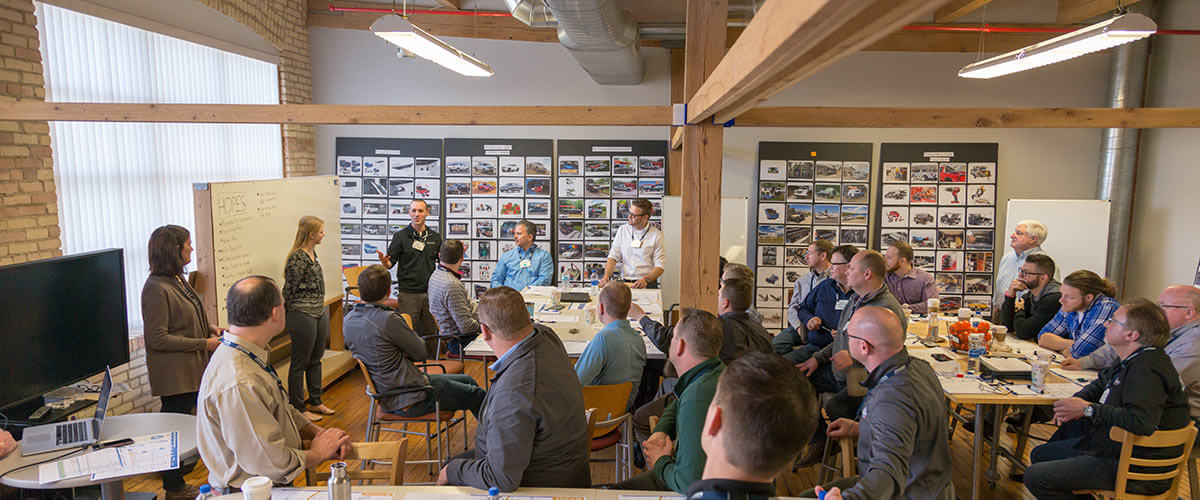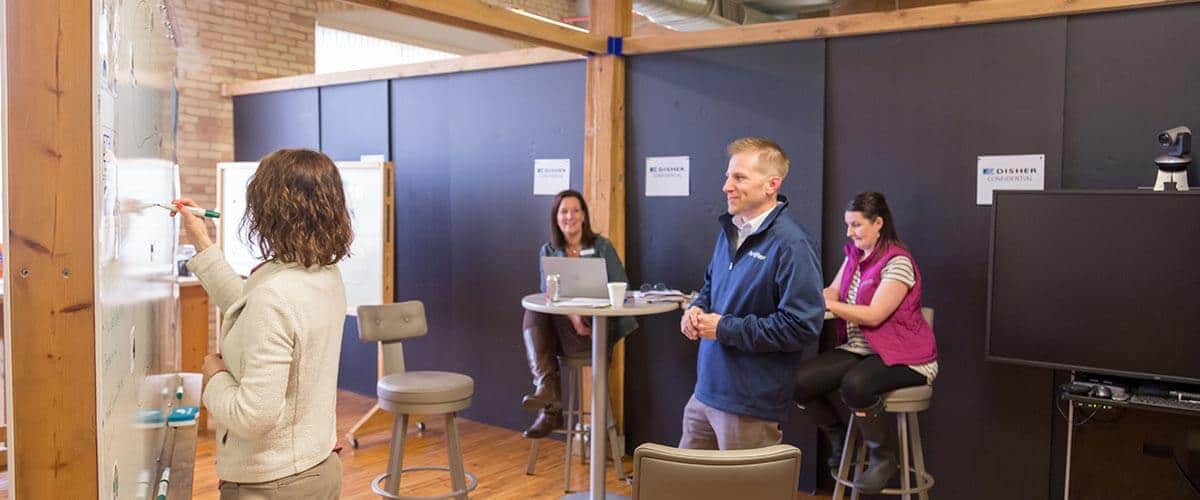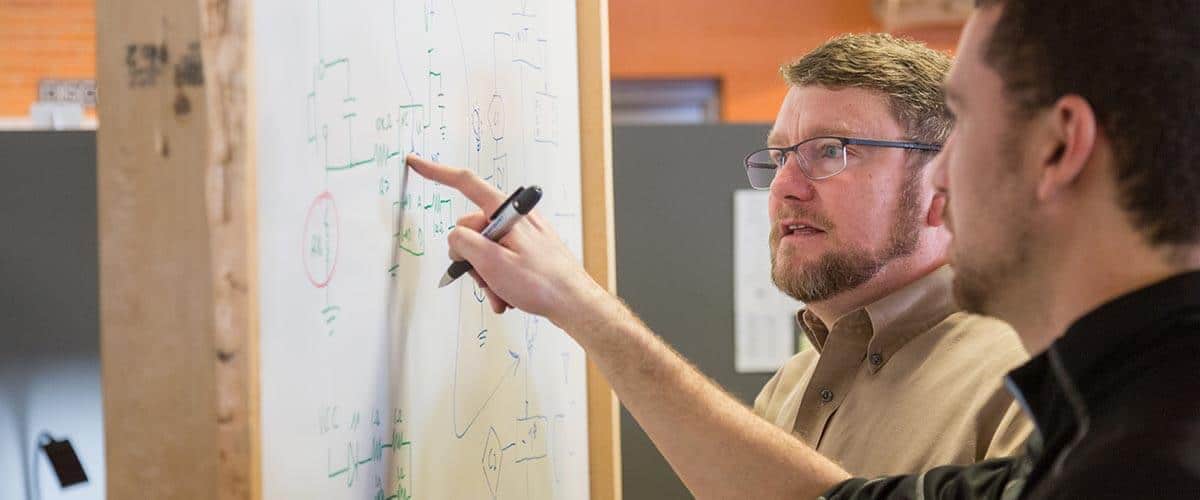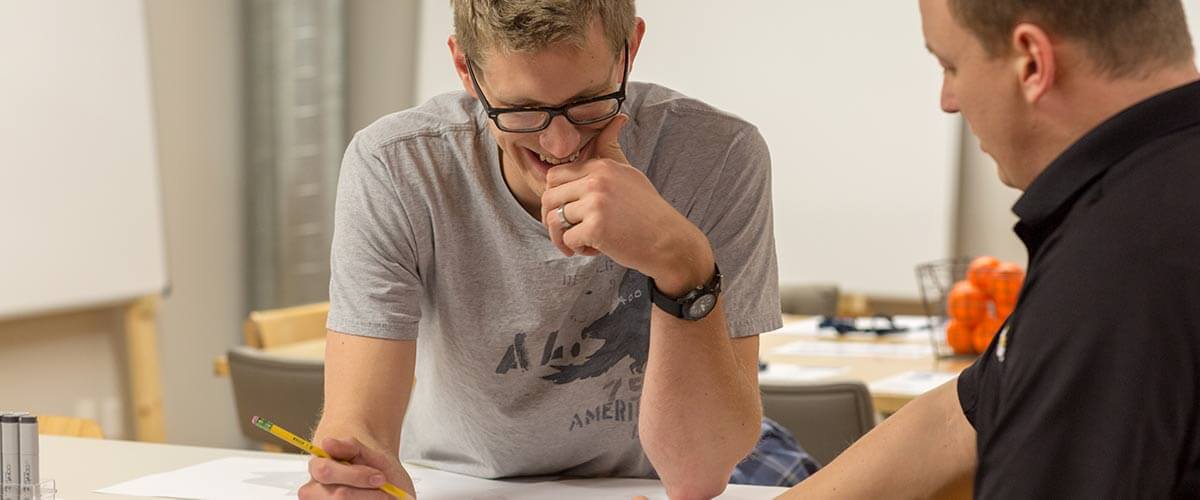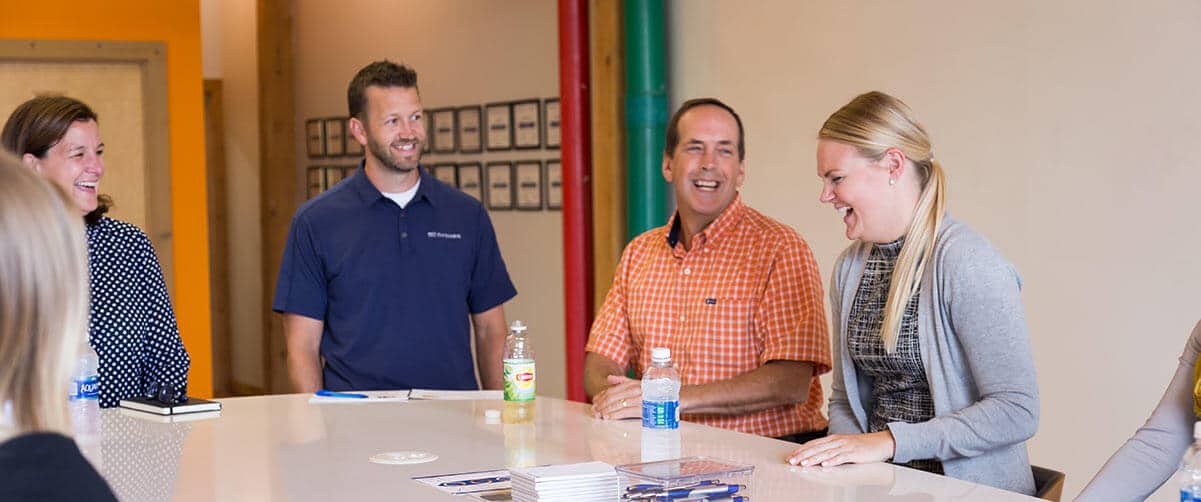Equipping Leaders to Make Real Change
June 27, 2018

Written By:
Angela Morrill | Business Solutions Advisor

The People Side of Change
Change. The word usually carries unpleasant connotations for all of us. And to bring about organizational change that involves changing behaviors? This brings about a whole other level of trepidation. According to author Torben Rick, “Changing culture is a bit like changing the course of a large ship – it takes time to maneuver and while the engines are pushing one way, the tides and winds are pushing another.” Unfortunately, a large percentage of organizational change efforts do fail. We have likely witnessed a flavor of the month, come-and-go approach. Maybe you had a great idea that just did not stick. Perhaps you have been part of a group that worked tirelessly to design the perfect (fill in the blank). Collectively, you had great passion and enthusiasm for the change. You even had a plan for implementing the change— only to look back a year later to realize that nothing had really changed. Ugh!
Why does this happen? At DISHER we have worked with many organizations like those described above. From our experience, we have noticed some common roadblocks to successful cultural transformation.
Roadblocks to Organizational Transformation
1. Leaders underestimate the organizational momentum against any such change and instead decide to go it alone.
2. The great idea was relegated only to the heads and hard drives of those holding the baton; it was not communicated to the entire organization.
3. The change had no legs; it didn’t have an action plan.
4. There was a lack of buy-in from the people who needed to change.
5. It did not rise to the top of the priority mountain; there weren’t enough hours in the day to work on the change needed.
6. The human side of change was neglected.
As John Mayer sings, perhaps we are waiting on the world to change. We wish it was easy. But change requires daily work— especially the human side of change. And the human side of change is critical. If left unattended, people will get in the way of even the most brilliant transformational idea. For those of us who have been called into an organization to do it right the second time around, (because we believe it is never too late to do the right thing), we know how difficult and costly it can be to effect positive change after a failed attempt. How many times have we heard that it is best to do it right the first time? But real change needs to happen to bring organizations to the next level of performance. So, what are we to do?
How to Improve the People Side of Change
Increase Your Knowledge
Learn what it takes to manage the people side of change to support any change effort. Many outstanding books, articles, and training courses are available on this topic. Leaders must build time into their schedules to gain knowledge. One of my new favorites is the book Switch, How to Change Things When Change Is Hard by Chip and Dan Heath. At DISHER, we train leaders on how to lead change in our LEAD 365 Select Leadership Development offering. It is an integrated approach which includes topical discussion, one-on-one coaching, and peer group support.
Improve Your Soft Skills
It is one thing to know what needs to be done and another thing to know how to get it done. A variety of tools are available to assist in the how to navigate change. Having the discernment to know which ones to use when is certainly a skill. When I think of the skills required to effectively execute change, the hard-technical skills like project management come to mind. Being able to put together a plan, timeline, and the steps to achieve the goal are important. And because the people side of change is just as much of an art as it is a science, soft skills must be blended with the technical skills. Soft skills such as empathetic listening, being respectful, and building trust need to be nurtured and practiced. A leader’s mastery of soft skills is key in building a healthy culture and impacting change effectively.
Know Your Strengths and Weaknesses
We all have specific strengths and talents that make us valuable. You likely know what your abilities are. However, no one has strengths in every area of running a business, a family, a committee, etc. In our leadership programs, we encourage participants to reflect on their strengths and weaknesses. We urge them to invite input from the people around them— where they work, play, and live. Turns out, everyone has an opinion and is generally open to sharing them. When we review the feedback with them; we look for themes. These are the golden nuggets— the ones to pay attention to. While these are informal surveys, we also assist leaders by conducting formal assessments to help them realize their leadership potential.
Form a Change-Management Team
DISHER encourages leaders to do an inventory of the technical skills and soft skills of their entire leadership team. The abilities that make us good at our jobs may not be the ones required to navigate the people side of change. It often becomes advantageous to pull people onto a change team with complementary strengths. Some leaders find themselves surrounded by a diverse community of talent to form the perfect team. Other leaders may partner with DISHER for immediate direct support with their change effort or for help in recruiting new members to their team.
Hire a Coach
Some leaders find they possess the talent but have not fully developed it. Our coaches challenge leaders to consider their immediate and long-term goals and what it will take to successfully achieve them. If developing a talent or skill supports their goals and the time is right, a coach can really improve your leadership game. A coach will customize a plan which may include reading books, watching videos, attending training, and one-on-one interactive coaching sessions. The coach’s role is to help the leader get clarity on what needs to be done, develop action plans, and serve as an accountability partner. This is especially useful for those leaders who juggle a basketful of shifting priorities. Success often comes with the consistent support of a coach who serves as the wind beneath a leader’s wings. A good coach can also help identify a broader support system (accountability partners) and necessary changes in the environment (triggers) to nurture positive, long-term leadership growth.
Measure Results
Lastly, the principle, what gets measured gets managed, also applies to the people side of change. I have found it useful to collect data at the starting point of any project to get a true baseline gage. In this case, measuring the state of people’s hearts and minds as it pertains to the area of concern is valuable. For significant shifts in culture, we use the Denison Organizational Culture Assessment. It is a quantitative and qualitative tool we use at DISHER and with our customers alike. It identifies not only potential areas of focus for change, but it takes a snapshot of the organization’s health. Ideally, a snapshot is taken before change and again after the change has had time to make an impact. There could be a year or more in between snapshots depending on the nature of the change. For this reason, we also recommend selecting a few key indicators, both leading indicators as well as lagging indicators, to assess whether behaviors are changing. After all, when people are involved, change is largely about behavioral change, isn’t it? Selecting indicators that can be easily assessed periodically will provide a good read on whether a change is taking hold. We like to take a Plan, Do, Check, Act (PDCA) approach with a review of the key metrics. If the metrics are not showing the desired movement, we take alternative actions before too much time passes to increase the likelihood for success.
I admire the leaders who have worked diligently to master the art of managing the people side of change in their organizations. Change is hard and takes intentional daily effort. Developing the skills and abilities to navigate change effectively is a lifelong journey. If your organization has struggled with achieving real cultural transformation— it is never too late to do the right thing. Jennifer Hudson sings this point well, I need a friend to help me start all over again. Let DISHER help you and your leadership team get back on track with your next organizational change initiative. With proper attention to the people side of change, your culture will become stronger and your team will perform at an even higher level.
The DISHER Business Solutions team offers a variety of organizational and leadership development tools that can significantly impact your team’s performance. If you or your team would like to learn more, please contact us.

